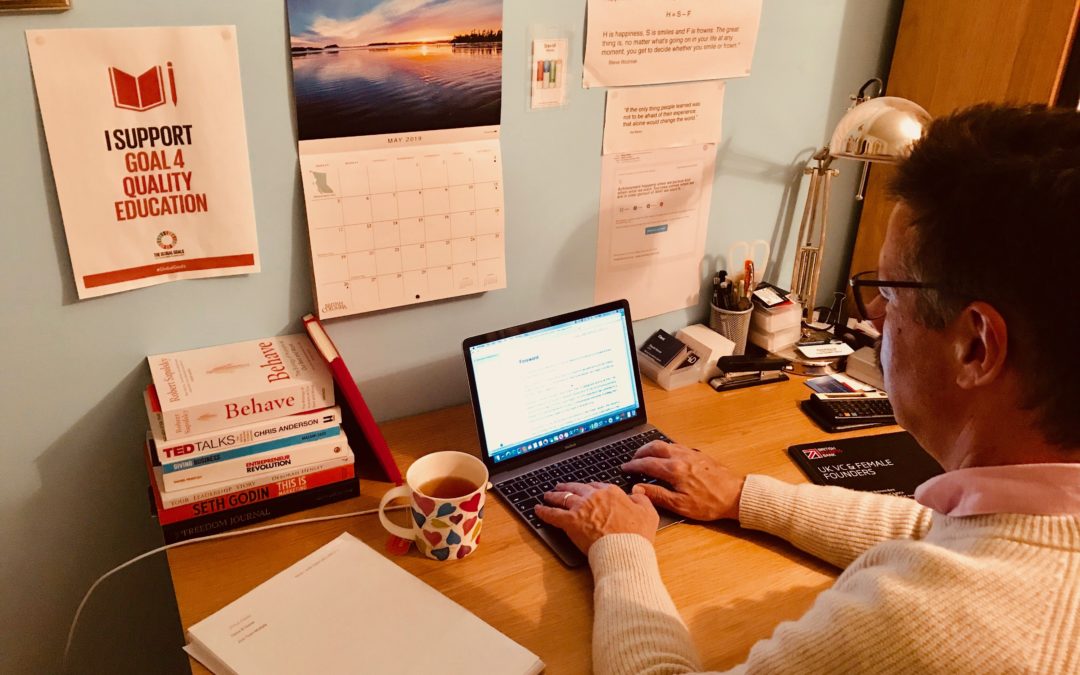A book for and in Celebration of Entrepreneurs: Part II

"If you want to glide toward money, you have to make sure your message is clear as a bell, and you need to ensure that you have a unified team capable of communicating it."
-Alejandro Cremades, Founder of crowdfunding platform Rock the Post/Onevest and author of The Art of Startup Fundraising.
This quote by Alejandro Cremades perfectly encapsulates the theme of part one, as explored in our previous post, A book for and in Celebration of Entrepreneurs: Part I. In order to raise money, you must ensure you have the following in place: solid values, a clear brand and slick systems and processes. However, if you want to glide towards money, it is vital that you also have a good team.
These, alongside the necessary changes to an entrepreneur’s headspace, all lead me to the crux of the book: the FACE methodology. It is this section that I am delighted to share with you today!
Split into four sections, part two dedicates one chapter to each step of the FACE methodology
F is for Fund is by far the longest chapter, as it details all the ins and outs of raising money in business. I had a great deal of fun writing this chapter, for I know how empowering this process can be for entrepreneurs and am delighted to be able to share everything I’ve learnt with you.
The fact that I was not limited to blog posts, or simply sharing my knowledge with the clients I work with, meant that I could distill 30 years of expertise into 20% of the entire word count of the book. And in the vein of George Bernard Shaw, continue to serve a community of amazing entrepreneurs. For a sneak peak of what can be found in this section see the chapter wrap below:
In this chapter, the longest in the book by some measure, we’ve covered a great deal, including:
- Making sure the business is set up as a limited company
- Seeking professional advice; do not try to do this on your own
- The lesson from my dad to the fourteen-year-old me: what you borrow, you must pay back
- Seeking equity funding from different places as the business grows – pick appropriately
- Corporate governance
- Keeping your lenders and your investors informed
More than anything else, the thing I want you to take away from this chapter is to think in terms of abundance, not scarcity. There is more money out there than you can possibly imagine.
Although F is for Fund provided me with a fantastic platform to share my knowledge of raising money, the following chapter was by far the most enjoyable to write.
A is for Acquire is all about how you can spend the cash you’ve worked so hard to raise and earn.
In this chapter, I take you through the necessary steps in acquiring new companies. Covering the journey from initial contact between buyer and seller to post-completion matters, I aim for this chapter to offer you an accessible guide to growing your company even further.
Matters like these can be incredibly complex, but the one message I hope you will take away is from the great Warren Buffet:
It is far better to buy a wonderful company at a fair price than a fair company at a wonderful price.
Warren Buffet
Up next is the chapter C is for Consolidate, a less glamorous, but nevertheless vital part of the methodology. In the book I explain:
While Fund and Acquire may be considered the sexy parts of the FACE methodology, Consolidate is where the hard work begins. It is also the area that decides whether the acquisition is a successful one or not. This is where you put two companies together, and at least one of them is going to face a significant change in values and culture.
Finally, the reader is led through to the last stage: E is for Exit.
Covering the main routes to exiting your business I discuss liquidation, passing the business onto the next generation, trade sale, management buyout, buy-in management buyout and IPO on a stock exchange.
Whatever way you exit, the process can be an emotional rollercoaster, and the aim of this chapter is to help you figure out the best route for your business. In turn, this should mitigate some of the difficulty. Having discussed the FACE methodology at length, Part II closes with a case study.
n the next post I’ll share parts of the concluding section of the book with you along with insights into one of the most challenging parts to write: the acknowledgements section. As I’ve discussed before, I have been overwhelmed with gratitude when writing this book, for it has made me acutely aware of how many people have inspired and shaped this book.
For now, I leave you with a quote from the conclusion. See you next time!
This is where the rubber meets the road. The question now is: how do you FACE Your Future and make it happen?”
David